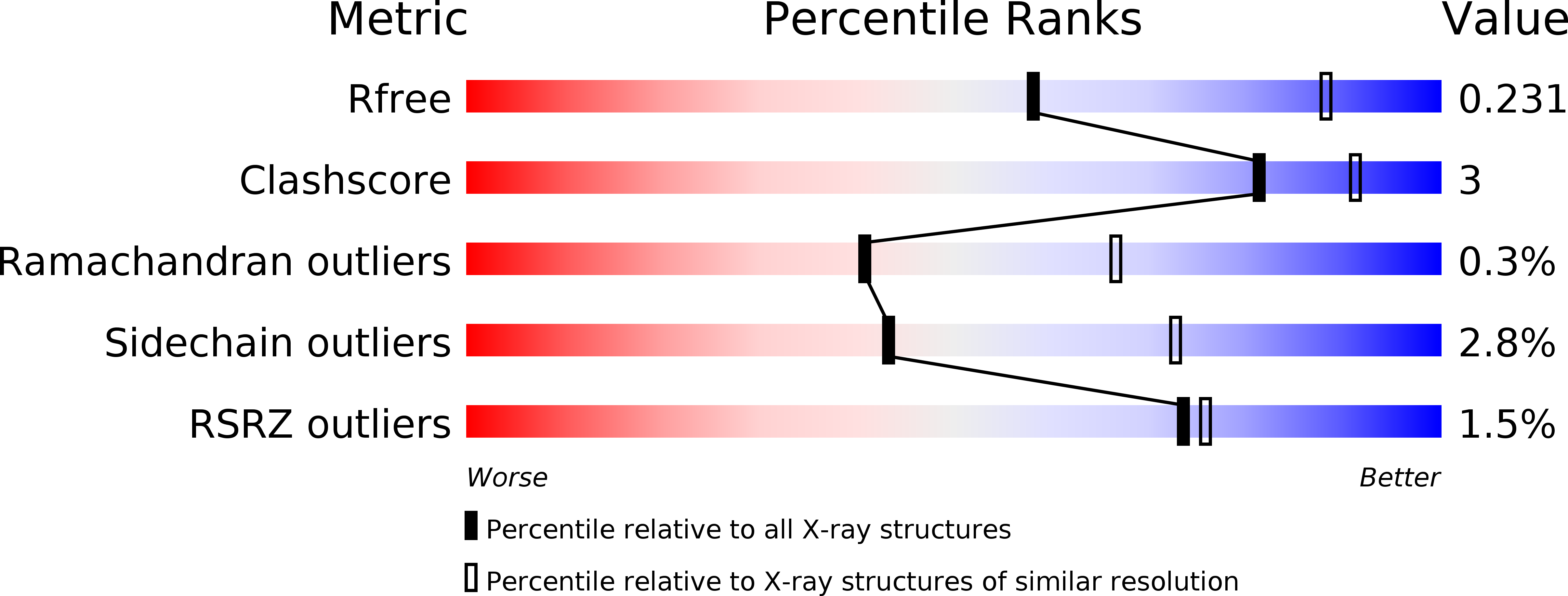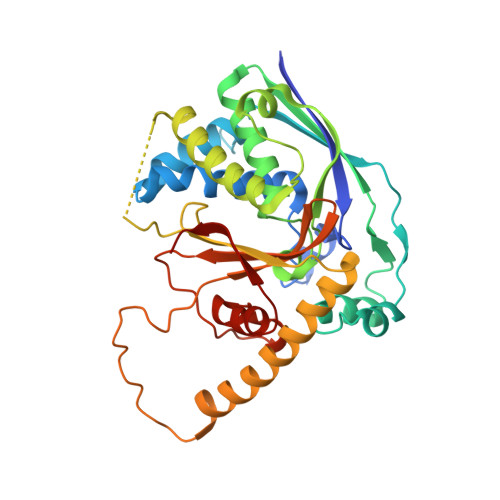Structural Model of a CRISPR RNA-Silencing Complex Reveals the RNA-Target Cleavage Activity in Cmr4.
Benda, C., Ebert, J., Scheltema, R.A., Schiller, H.B., Baumgartner, M., Bonneau, F., Mann, M., Conti, E.(2014) Mol Cell 56: 43-54
- PubMed: 25280103
- DOI: https://doi.org/10.1016/j.molcel.2014.09.002
- Primary Citation of Related Structures:
4W8V, 4W8W, 4W8X, 4W8Y, 4W8Z - PubMed Abstract:
The Cmr complex is an RNA-guided endonuclease that cleaves foreign RNA targets as part of the CRISPR prokaryotic defense system. We investigated the molecular architecture of the P. furiosus Cmr complex using an integrative structural biology approach. We determined crystal structures of P. furiosus Cmr1, Cmr2, Cmr4, and Cmr6 and combined them with known structural information to interpret the cryo-EM map of the complex. To support structure determination, we obtained residue-specific interaction data using protein crosslinking and mass spectrometry. The resulting pseudoatomic model reveals how the superhelical backbone of the complex is defined by the polymerizing principles of Cmr4 and Cmr5 and how it is capped at the extremities by proteins of similar folds. The inner surface of the superhelix exposes conserved residues of Cmr4 that we show are required for target-cleavage activity. The structural and biochemical data thus identify Cmr4 as the conserved endoribonuclease of the Cmr complex.
Organizational Affiliation:
Department of Structural Cell Biology, Max Planck Institute of Biochemistry, 82152 Martinsried, Germany.














